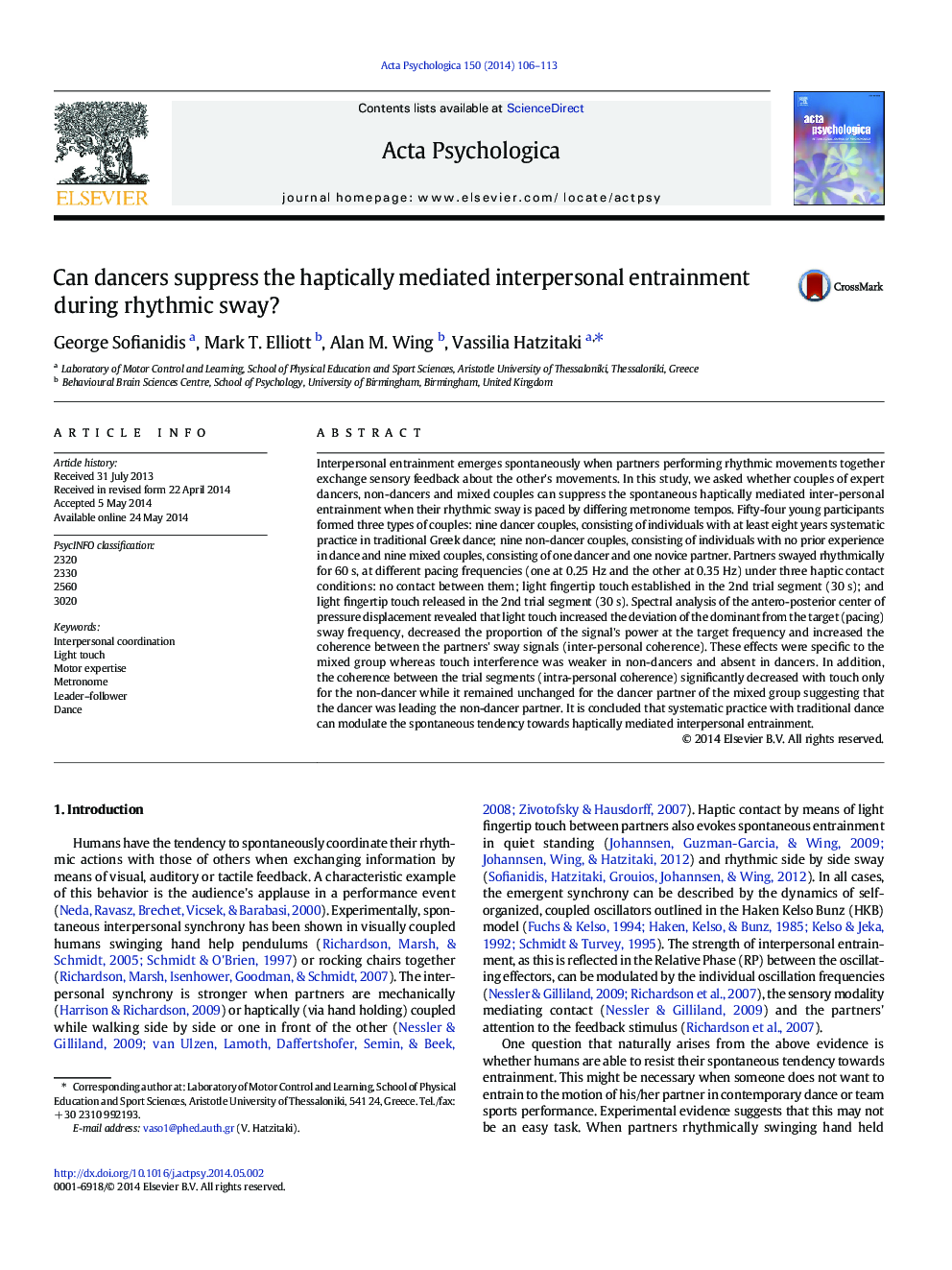| Article ID | Journal | Published Year | Pages | File Type |
|---|---|---|---|---|
| 919738 | Acta Psychologica | 2014 | 8 Pages |
•Light fingertip touch evokes spontaneous interpersonal entrainment•We asked whether dancer and non-dancer couples can suppress interpersonal synchrony•Dancers avoided the haptically mediated synchrony when swaying at different tempos•Non-dancers entrained to the sway frequency of their expert partner•Dance expertise modulates the spontaneous tendency toward interpersonal entrainment
Interpersonal entrainment emerges spontaneously when partners performing rhythmic movements together exchange sensory feedback about the other's movements. In this study, we asked whether couples of expert dancers, non-dancers and mixed couples can suppress the spontaneous haptically mediated inter-personal entrainment when their rhythmic sway is paced by differing metronome tempos. Fifty-four young participants formed three types of couples: nine dancer couples, consisting of individuals with at least eight years systematic practice in traditional Greek dance; nine non-dancer couples, consisting of individuals with no prior experience in dance and nine mixed couples, consisting of one dancer and one novice partner. Partners swayed rhythmically for 60 s, at different pacing frequencies (one at 0.25 Hz and the other at 0.35 Hz) under three haptic contact conditions: no contact between them; light fingertip touch established in the 2nd trial segment (30 s); and light fingertip touch released in the 2nd trial segment (30 s). Spectral analysis of the antero-posterior center of pressure displacement revealed that light touch increased the deviation of the dominant from the target (pacing) sway frequency, decreased the proportion of the signal's power at the target frequency and increased the coherence between the partners' sway signals (inter-personal coherence). These effects were specific to the mixed group whereas touch interference was weaker in non-dancers and absent in dancers. In addition, the coherence between the trial segments (intra-personal coherence) significantly decreased with touch only for the non-dancer while it remained unchanged for the dancer partner of the mixed group suggesting that the dancer was leading the non-dancer partner. It is concluded that systematic practice with traditional dance can modulate the spontaneous tendency towards haptically mediated interpersonal entrainment.
